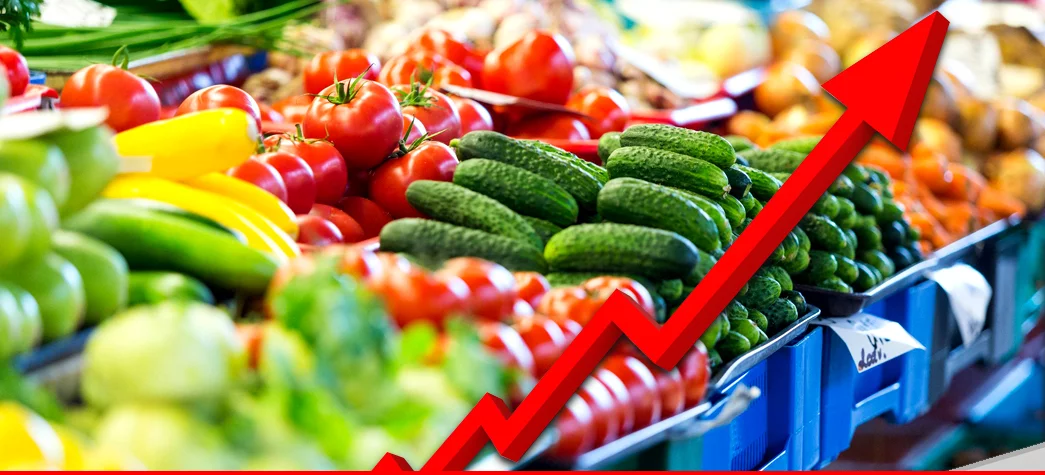Food Inflation Peaks and Starts Receding
Food inflation the primary culprit behind this resurgence appears to be the essential food basket. Accounting for a significant 34.6 percent of the national Consumer Price Index (CPI), food inflation witnessed a substantial 28 percent surge in November 2023. The driving force behind this increase was the perishable components, which experienced a notable 6.2 percent month-on-month escalation. This follows a significant 13 percent rise from the preceding month, emphasizing the challenges posed by escalating perishable prices.
Contrary to immediate concerns, the rise in the perishable sub-index offers a positive outlook on a year-on-year basis, standing at a modest 9.62 percent. Notably, this makes it the sole component within the Consumer Price Index (CPI) to maintain an annual inflation rate within the single digits. For those unfamiliar with the context, the restrained increase in perishable inflation over the past year can be attributed to the aftermath of the unprecedented monsoon floods of 2022, resulting in crop damage and hyperinflation in fruit and vegetable prices from September to January. This situation was further exacerbated by import restrictions.
The subsequent decline in prices for perishables such as onions, tomatoes, ginger, and garlic occurred as fresh crops were harvested and imported supplies gradually entered the market during the second and third quarters of the current calendar year (CY23). As a result, average prices decreased, mitigating the earlier spike.
Looking ahead, the year-on-year impact on headline inflation from perishables is expected to be substantial in the coming months. This anticipation arises as the seasonal slowdown in prices for various fruits and vegetables is projected to commence in December and January. Significantly, food inflation has already peaked, and the distinct contribution from the perishables sub-index is poised to take center stage in the short term. This shift brings a sense of relief, indicating a positive trajectory for consumers in the near future.

Unveiling the Complex Dynamics of Food Inflation: A Call for Rigorous Research
While the recent deceleration in overall price levels, driven largely by perishables, may offer a momentary reprieve, historical trends suggest that stability in perishable prices tends to be transient. Over a 6 to 12 month period, historical data indicates a propensity for perishable prices to exhibit upward trajectories more frequently than downturns.
The recent easing of food inflation, extending across both urban and rural markets, appears to have coincided with administrative measures against smuggling and currency exchanges, along with a peak in discount rates. However, attributing causation solely to these factors raises skepticism, given the complexity of the economic landscape.
It’s crucial to acknowledge that over the past 12 months, national inflation has averaged above 31 percent, with food inflation surpassing 42 percent. Notably, the food index has consistently accounted for 50 percent of the national headline inflation, underscoring the substantial impact of rising food prices. While sensational narratives may point fingers at smuggling or governance issues, it’s imperative to approach the situation with analytical rigor.
In a market where claims persist that food price increases stem from cost-push factors and disruptions in the supply chain, and in an economy where a significant portion of the food and agri-value chain operates outside formal banking credit channels, the recent stability in food prices following a peak in market interest rates raises intriguing questions.
Does this signify the existence of an effective monetary transmission mechanism, suggesting that food prices were influenced by negative real rates? Alternatively, how does currency market stability exert such a pronounced impact on food prices, especially considering the limited external trade in food commodities?
With food inflation seemingly past its zenith, there is a pressing need for comprehensive and impartial economic research to address these intricate questions. This inquiry is particularly crucial given the disproportionate weightage of the food basket in the national Consumer Price Index (CPI). Only through a commitment to thorough research can policymakers hope to navigate the intricacies of these economic dynamics, preventing the recurrence of a potentially devastating inflationary cycle and safeguarding the purchasing power of millions below the poverty line in the future.
Primary auction for GDS will also be held on PSX

